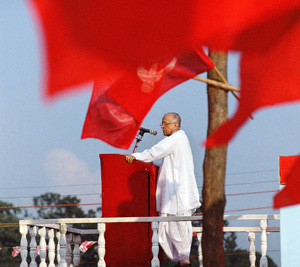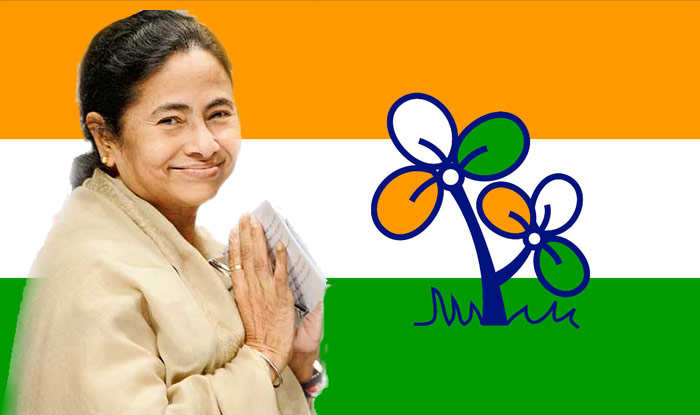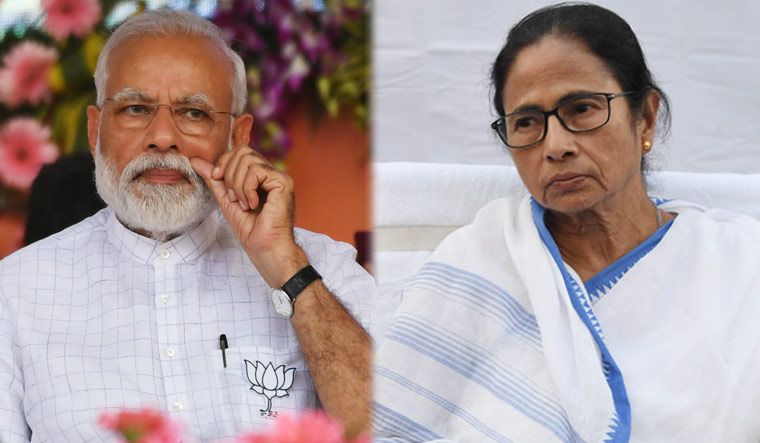The Political Journey of West Bengal
Politics of West Bengal is dominated by the following major political parties: The All India Trinamool Congress (TMC), the Bharatiya Janta Party (BJP), the Communist Party of India (Marxist) and the Indian National Congress (INC). From the view point of a political expert, West Bengal is a hold state where a winning party may continue to win for a considerable amount of time. West Bengal is governed through a parliamentary system of representative democracy, a feature the state shares with other Indian states. Universal Sufferage is granted to the residents. There are two branches of the government. The West Bengal Legislative Assembly consists of elected members and special office bearers such as the Speaker and the Deputy Speaker, who are elected by the members. The assembly is Unicameral with 295 members of the Legislative Assembly of the MLAs, including one nominated from the Anglo Indian community. Terms of the office run for five years, unless the assembly is dissolved prior to the completion of the term. The state contributes 42 seats to the Lok Sabha and 16 seats to the Rajya Sabha of the Indian Parliament.
The Naxalbari Uprising-

In 1967, the Communist Party of India (Marxist) was the main force behind the United Front government. The Chief Ministership was given to Ajoy Mukherjee of the Bengal Congress. After that, a peasant uprising broke out in Naxalbari, in Northern West Bengal. The insurgency was led by district level Communist Party of India (Marxist) leaders, Charu Majumdar and Kanu Sanyal. The Naxalbari movement was violently repressed by the West Bengal government. During the 1970s and 1980s, severe power shortages, strikes and violent Marxist- Naxalite movement damaged much of the state’s infrastructure, leading to a period of economic stagnation. The Bangladesh Liberation war of 1971 resulted in the influx of millions of refugees into West Bengal, causing significant strains on its infrastructure. The 1974 Smallpox epidemic killed thousands of people in the West Bengal region alone. West Bengal politics underwent a major change when the Left Front won the 1977 assembly elections, defeating the incumbent Indian National Congress (INC). The Left Front, led by the Communist Party of India (Marxist), has governed the state for the subsequent three decades.
Dismissal of the United Front government-
In November 1967, the United Front government was dismissed by the Central government. Initially, the Indian National Congress (INC) formed a minority government led by Prafulla Chandra Ghosh, but the cabinet did not last long. Following the proclamation that the United Front government had been dislodged, a 48 hour hartal was effective throughout the state. After the fall of the Ghosh Cabinet, the state was put under President’s rule. Fresh elections were held in West Bengal in 1969. The Communist Party of India (Marxist) emerged as the largest party in the West Bengal Legislative Assembly. But, with the active support of the Communist Party of India and the Bangla Congress, Ajoy Mukherjee was returned as the Chief Minister of West Bengal. Mukherjee resigned his Chief Minister position on 16th March, 1970 and the state was put under the President’s rule. The Indian National Congress (INC) won the 1972 Assembly elections and its leader, Siddhartha Shankara Ray become the Chief Minister of West Bengal. During this period, the Prime Minister of India, Indira Gandhi declared Emergency in 1975.
The Left Front Era-

In the 1977 election of the state legislature, the Left Front headed by the Communist Party of India (Marxist), won 243 seats thereby gaining a majority. The first Left Front government was led by Jyoti Basu as the Chief Minister. In May 1979, a massacre took place in Marichjhanpi which took place under the rule of the Communist Party of India in West Bengal. It was related to the forcible eviction of the refugees who had fled from East Pakistan thereby leading to the death of a sizable population among them. After leading the Left Front government for consecutive five terms, Jyoti Basu retired from active politics and Buddhadeb Bhattacharjee was appointed as his successor. Five years later, the Left Front come back to the power with Bhattacharjee again assuming the office of the Chief Minister. The state’s economic recovery gathered momentum after economic reforms in India were introduced in the early 1990s by the Central government, aided by the election of a new reformist Chief Minister Buddhadeb Bhattacharya in 2000. As of 2007, armed activists have been organizing terrorist attacks in some parts of the state, while clashes with the administration had taken place at several sensitive places on the issue of industrial land acquisition. The Nandigram violenc3e was an incident in Nandigram, West Bengal where, on the orders of the Left Front government, more than 4000 heavily armed police stormed the Nandigram area with the aim of stamping out protests against the West Bengal government’s plans to expropriate 10,000 acres of land for a Special Economic Zone (SEZ) to be developed by the Indonesian- based Salim Group. The police shot dead at least 14 villagers and wounded 70 more. The SEZ controversy started when the government of West Bengal decided that the Salim Group of Indonesia would set up a chemical hub under the SEZ policy at Nandigram, a rural area in the district of Purba Medinipur. The villagers took over the administration of the area and all the road to the villages were cut off. A front- page story in the Kolkata newspaper, The Telegraph, on 4th January, 2007 was headlined, “False alarm sparks clash”. According to the newspaper that village council meeting at which the alleged land seizure was to be announced was actually a meeting to declare Nandigram a “clean village”, that is, a village in which all the households had access to toilet facilities.
The Trinamool Congress Era-

The citizens of West Bengal were fed up of the politics of the Left Front government and the nuisance they caused wasn’t accepted by the citizens anymore which resulted to the victory of the Trinamool Congress in West Bengal Legislative Assembly elections in 2011. The TMC won an absolute majority defeating the Left Front government. Mamata Banerjee, the leader of the Trinamool Congress, became the Chief Minister of West Bengal. The success of Trinamool Congress was repeated in the 2013 Panchayat elections and the 2014 Indian general elections in which Trinamool Congress won 34 out of 42 seats in Lok Sabha.
The current increase in the vote bank of Bharatiya Janta Party in West Bengal-

The Bharatiya Janta Party is slowly gaining some votes since the past few elections in West Bengal. In this, the most vitriolic exchanges in the last West Bengal Legislative Assembly elections has perhaps been between Prime Minister Narendra Modi and the West Bengal Chief Minister, Mamata Banerjee. The fierce contest in West Bengal was reflected in the voter turnout, which is the highest in the country in this election so far. Indeed, just eight years after Banerjee’s Trinamool Congress brought the Left Front government’s 34 years of uninterrupted rule to an end, a road journey through West Bengal makes it evident that there is a new rising star here, the Bharatiya Janta Party (BJP). In most constituencies, it was a direct fight between the TMC and the BJP, while in a handful, the Communist Party of India (Marxist) or the congress was still in contention. That was a work in progress for the BJP in West Bengal. The party does not have much of an organisation in West Bengal, nor sufficient candidates from its own ideological pool. For many, constituencies, it had to seek out disgruntled persons from other parties to be nominees. Across the state, the party’s offices are just being set up. While, Mamata Banerjee, the Chief Minister of Bengal fought possibly the toughest battle in her political career, remains popular in rural Bengal, where people continue to make a distinction between her and her workers. Many of her schemes have worked, and the people are grateful. She has an enormous vote bank of the majority of Muslims in West Bengal. But the rivalry between the Bharatiya Janta Party and the Trinamool Congress is real and she continues to fight hard.
